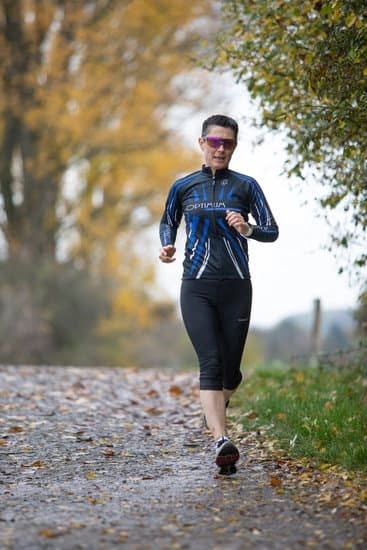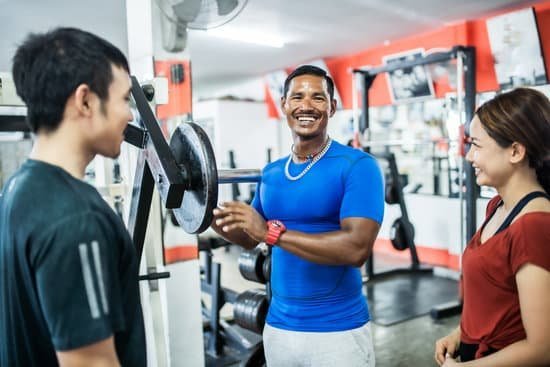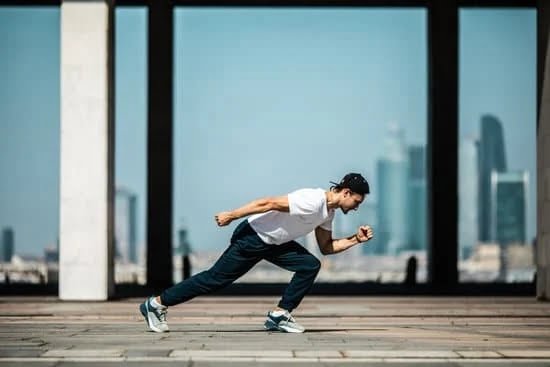The President’s Fitness Challenge has long been a cornerstone in promoting health and wellness among Americans. This initiative, established by President Lyndon B. Johnson in 1966, has since evolved into a multifaceted program aimed at encouraging regular physical activity, instilling healthy habits, and combating sedentary lifestyles, particularly among the youth.
With its holistic approach to wellness and broad participation across schools, organizations, and individuals, the President’s Fitness Challenge has proven to be an influential force in elevating the nation’s fitness levels.
At its core, the President’s Fitness Challenge seeks to address the increasing concerns surrounding health and wellness in America. Sedentary lifestyles have become all too common in our modern society, leading to a wide range of physical and mental health issues. Through this initiative, individuals are empowered and motivated to prioritize their well-being by engaging regularly in physical activities that suit their abilities and interests.
Over the years, the President’s Fitness Challenge has undergone several iterations under different presidents. It has integrated various components such as comprehensive fitness tests, nutrition guidelines, and educational resources. By encompassing these diverse aspects of wellness, the challenge aims to promote not only physical fitness but also mental resilience and overall well-being.
The significance of broad participation cannot be overstated when it comes to the success of the President’s Fitness Challenge. Schools play a crucial role in fostering a culture of active living among students while organizations encourage employees to prioritize their health. However, individual citizens also have an essential part to play; each person taking proactive steps towards a healthier lifestyle contributes significantly to building a stronger nation.
As we delve deeper into understanding the history, objectives, components, successes, controversies surrounding this initiative as well as its future outlook throughout this article – one thing remains clear: The President’s Fitness Challenge is more than just an exercise program; it is a catalyst for positive change that extends beyond individual health outcomes to create healthier communities and ultimately foster a healthier nation.
Historical Background
The President’s Fitness Challenge has a rich historical background that dates back to its establishment by President Lyndon B. Johnson in 1966. The program was initially called the Presidential Physical Fitness Award, and it aimed to address the growing concern about the declining levels of fitness among American youth.
President Johnson, with the support of his wife, Lady Bird Johnson, recognized the importance of promoting physical activity and healthy habits among young people. He implemented a series of physical fitness tests for schools nationwide, encouraging students to engage in regular exercise and adopt healthier lifestyles. This initiative was particularly significant during a time when sedentary lifestyles were becoming more prevalent due to advancements in technology and changes in daily activities.
Since its inception, the President’s Fitness Challenge has undergone various iterations under different presidents. In 2012, First Lady Michelle Obama rebranded the program as Let’s Move. Active Schools, which focused on creating healthier school environments and inspiring children to be more physically active. The evolution of the program reflects changing societal attitudes towards health and wellness and highlights how different administrations have sought to adapt their strategies to better address current challenges.
| Year | Administration | Program Name |
|---|---|---|
| 1966 | Lyndon B. Johnson | Presidential Physical Fitness Award |
| 2012 | Barack Obama | Let’s Move. Active Schools |
Over the years, the President’s Fitness Challenge has become an integral part of promoting health and wellness among Americans of all ages. It has played a vital role in raising awareness about the need for regular physical activity, encouraging the development of healthy habits, and combating sedentary lifestyles. The program has not only provided opportunities for individuals to improve their fitness levels but has also fostered a sense of community and teamwork among participants.
Moreover, the President’s Fitness Challenge has had a significant impact on school systems across the country. Its incorporation into educational curricula has helped create a culture of health and wellness within schools, providing students with valuable resources and guidance to lead healthier lives. By making physical fitness a national priority, the program has instilled lifelong habits in countless individuals and contributed to the overall well-being of communities.
Through its historical journey, from its inception by President Lyndon B. Johnson to subsequent iterations under different administrations, the President’s Fitness Challenge has left an indelible mark on promoting health and wellness within America. This section has provided an overview of its historical background, highlighting how it evolved over time to adapt to changing societal needs. The following sections will delve deeper into various aspects of the challenge, including its objectives, components, participation eligibility, achievements, criticisms, and future outlook.
Objectives and Purpose
The main objectives of the President’s Fitness Challenge are to encourage regular physical activity, foster healthy habits, and combat the growing issue of sedentary lifestyles among youth. This initiative recognizes the importance of physical fitness in overall well-being and aims to instill a lifelong commitment to health in individuals from an early age.
One of the primary goals of the President’s Fitness Challenge is to encourage regular physical activity. In today’s society, sedentary lifestyles have become increasingly prevalent, especially among young people. The Challenge seeks to reverse this trend by promoting active living and engaging individuals in various forms of exercise and movement. By emphasizing the importance of physical activity, the initiative aims to establish a foundation for a healthier lifestyle that carries into adulthood.
Another objective of the President’s Fitness Challenge is to foster healthy habits. The program provides guidelines on nutrition and encourages individuals to make informed choices about their diets. Through educational resources and informational campaigns, participants learn about balanced nutrition, portion control, and the benefits of consuming whole foods. By incorporating these principles into their daily lives, individuals can develop long-term healthy eating habits that support overall well-being.
Combatting sedentary lifestyles among youth is also a key objective of the President’s Fitness Challenge. With advancements in technology and an increasing number of sedentary activities available, such as video games or excessive screen time, it has become more important than ever to address this issue.
The initiative advocates for reducing sedentary activities and replacing them with physical activities that promote movement and engagement. By addressing this concern at an early age, the President’s Fitness Challenge helps prevent the development of unhealthy habits that can lead to a range of health issues later in life.
| Objective | Description |
|---|---|
| Encourage regular physical activity | The President’s Fitness Challenge aims to promote active living and engage individuals in various forms of exercise and movement. |
| Foster healthy habits | The initiative provides guidelines on nutrition and encourages individuals to make informed choices about their diets, promoting long-term healthy eating habits. |
| Combat sedentary lifestyles among youth | The President’s Fitness Challenge addresses the issue of sedentary lifestyles prevalent among young people by advocating for reducing sedentary activities and replacing them with physical activities that promote movement and engagement. |
Components of the Challenge
The President’s Fitness Challenge incorporates a variety of components that are designed to promote holistic wellness among participants. These components include physical fitness tests, nutrition guidelines, and educational resources that provide individuals with the tools they need to make healthy choices and lead active lives.
One important component of the challenge is the physical fitness test. This test assesses an individual’s aerobic capacity, strength, flexibility, and endurance. It typically includes activities such as running a mile, performing push-ups or sit-ups, and completing a flexibility exercise like the sit-and-reach.
The purpose of these tests is to gauge an individual’s current fitness level and track their progress over time. By setting goals based on these assessments, participants are motivated to improve their physical fitness and overall health.
In addition to physical fitness tests, the President’s Fitness Challenge also offers nutrition guidelines. These guidelines encourage participants to make healthy food choices by emphasizing the importance of well-balanced meals that incorporate fruits, vegetables, whole grains, lean protein sources, and low-fat dairy products. Participants are provided with practical tips for meal planning, grocery shopping, and cooking nutritious meals at home. By promoting proper nutrition alongside regular exercise, the challenge aims to instill lifelong healthy habits in individuals.
Lastly, educational resources play a significant role in the President’s Fitness Challenge. These resources provide participants with information about various aspects of wellness including mental health awareness, stress management techniques, sleep hygiene practices, and injury prevention strategies. By educating individuals about these topics, the challenge seeks to foster a comprehensive understanding of wellness beyond just physical fitness. Participants are empowered with knowledge that enables them to make informed choices regarding their well-being.
By incorporating physical fitness tests, nutrition guidelines, and educational resources into its framework, the President’s Fitness Challenge strives to achieve holistic wellness among its participants. Through this multifaceted approach to promoting health and well-being from all angles of life – mind and body – individuals are equipped with valuable tools and resources to improve their overall health and lead healthier lifestyles.
Participation and Eligibility
Participation in the President’s Fitness Challenge is open to a wide range of individuals and groups, including schools, organizations, and individual citizens. One of the key goals of the challenge is to encourage as many people as possible to get involved in regular physical activity and adopt healthier habits. By opening it up to different sectors of society, the challenge aims to have a broad impact on promoting health and wellness nationwide.
Schools
Schools play a crucial role in the President’s Fitness Challenge. They serve as important settings for promoting physical fitness among children and adolescents, who are particularly vulnerable to sedentary lifestyles. The challenge allows schools to participate by incorporating physical fitness tests and activities into their curriculum, encouraging students to engage in regular exercise and meet set targets. Additionally, participating schools can access educational resources provided by the challenge that support both teachers and students in learning about healthy living.
Organizations
Beyond schools, various organizations also have the opportunity to take part in the President’s Fitness Challenge. These may include youth clubs, sports teams, community centers, military groups, and other community-based organizations. Through their participation, these organizations contribute towards fostering a culture of physical fitness within their respective communities. Moreover, they can inspire team-building through shared fitness goals and promote greater camaraderie among participants.
Individual Citizens
The President’s Fitness Challenge recognizes that individuals play a crucial role in creating healthier communities. Any individual citizen can participate in the challenge by setting personal health objectives and tracking their progress towards meeting them. Whether it’s getting more active by taking daily walks or setting fitness goals with guidance from online resources provided by the challenge website, each person has an opportunity to make a positive impact on their own well-being.
Broad participation across all eligible sectors is vital for maximizing the impact of the President’s Fitness Challenge. It not only promotes physical fitness at an individual level but also creates a ripple effect that can positively influence families, peers, and the entire community. Through collective participation, the challenge has the potential to transform societal norms and attitudes towards wellness, making regular physical activity and healthier habits more accessible and appealing to all.
Achievements and Success Stories
The President’s Fitness Challenge has seen numerous achievements and success stories since its inception. One of the most remarkable outcomes is the significant improvements in fitness levels among participants. Through engaging in regular physical activity and following the guidelines set by the challenge, individuals have witnessed notable enhancements in their strength, endurance, and overall fitness.
An important aspect of the President’s Fitness Challenge is its ability to inspire personal transformation. Many participants have shared inspiring stories of how they were able to turn their sedentary lifestyles around and adopt healthier habits. These stories serve as a powerful reminder that no matter one’s starting point, with dedication and perseverance, anyone can achieve positive changes in their physical well-being.
Moreover, the impact of the President’s Fitness Challenge extends beyond individual achievements. It has been observed that communities participating in the challenge experience positive effects as well. By bringing people together with a common goal of promoting health and wellness, the challenge fosters a sense of unity and camaraderie within neighborhoods, schools, and organizations.
- Impressive improvements in fitness levels
- Inspiring stories of personal transformation
- Positive effects on communities
These achievements and success stories serve as motivation for others to join the President’s Fitness Challenge and strive for better health outcomes. They demonstrate that with determination and support, individuals can overcome barriers to physical activity and make positive changes towards a healthier lifestyle.
Esther Smith from Springfield Elementary School shared her inspiring story after participating in the President’s Fitness Challenge: “Before joining the challenge, I never really considered myself an athletic person. But through this program, I discovered my passion for running. The challenge pushed me to break out of my comfort zone and try new activities. Now I’m not only physically stronger but also more confident in myself”.
The impact on communities is also evident through initiatives like walkathons or community fitness events organized as part of the President’s Fitness Challenge. By involving people of all ages and backgrounds, these events create a sense of togetherness and emphasize the importance of prioritizing health at a societal level.
Legacy and Evolution
The President’s Fitness Challenge has witnessed significant evolution over the years, adapting to modern trends and advancements in technology. One major influence on its evolution has been the integration of technology and innovations in fitness tracking. With the rise of wearable fitness devices, smartphone apps, and online platforms, participants now have access to a wealth of data and tools to monitor their physical activity and progress.
These technological advancements have transformed the way individuals engage with the President’s Fitness Challenge. Participants can now easily track their daily steps, set fitness goals, and even compete with friends or other participants through virtual challenges. This not only enhances motivation but also fosters a sense of community that extends beyond geographical boundaries.
Furthermore, there has been a shift towards a more inclusive and diverse approach to physical fitness within the President’s Fitness Challenge. It recognizes that health and wellness are different for everyone, and thus encourages individuals of all abilities to participate. The challenge now includes adaptive exercises for people with disabilities, ensuring that everyone has an opportunity to engage in physical activity.
Moreover, efforts have been made to promote cultural diversity by incorporating various traditional forms of exercise into the challenge. This includes activities like yoga, martial arts, or dance forms from different cultures. By embracing different exercise traditions, the President’s Fitness Challenge promotes inclusivity while highlighting the importance of cultural heritage in maintaining overall well-being.
Criticisms and Controversies
While the President’s Fitness Challenge has undoubtedly been successful in promoting health and wellness among Americans, it has not been immune to criticism. One key concern raised by critics is the potential exclusion of certain marginalized groups from participating in the challenge. Critics argue that individuals from low-income communities, minority groups, or those with disabilities may face additional barriers that prevent them from fully engaging in physical activity or accessing necessary resources.
In response to these concerns, efforts have been made to ensure inclusivity within the President’s Fitness Challenge. Recognizing that everyone should have access to opportunities for physical fitness and well-being, initiatives have been implemented to provide adaptations and accommodations for individuals with disabilities.
Additionally, targeted outreach programs have been introduced to promote participation among underrepresented populations. By partnering with community organizations and schools in disadvantaged areas, greater access and support are provided to those who may face additional challenges when adopting healthy lifestyles.
Another controversial aspect of the President’s Fitness Challenge is related to body image and potential pressure on individuals to conform to a certain aesthetic standard. Some argue that by focusing primarily on physical attributes and fitness tests, there is a risk of perpetuating unhealthy ideals or creating an environment where appearance takes precedence over overall well-being. Concerns have been expressed about how this emphasis on physical fitness could potentially impact body image issues among vulnerable populations, particularly youth.
To address these concerns, recent iterations of the President’s Fitness Challenge have placed greater emphasis on holistic wellness rather than solely focusing on physical fitness. Educational components highlighting healthy behaviors beyond exercise have been integrated into programs, emphasizing nutrition, mental health awareness, stress management techniques, and body positivity messages. By taking a comprehensive approach that addresses multiple dimensions of wellness, efforts are made to promote positive messages and reduce the potential negative impact on body image issues.
While the President’s Fitness Challenge has faced some criticisms and controversies, it is important to recognize the ongoing efforts to address these concerns and make the program more inclusive and supportive. By recognizing the unique needs and challenges faced by different individuals and communities, the initiative can continue to evolve and adapt to better serve all Americans in their pursuit of overall health and well-being.
Future Outlook
As the President’s Fitness Challenge continues to evolve and adapt to the changing needs of society, there are several exciting prospects for its future. One potential enhancement could be the integration of new technologies and fitness innovations into the challenge. With advancements in wearable devices and fitness tracking apps, participants could have access to personalized exercise routines, real-time feedback on their progress, and interactive resources that make fitness more engaging and enjoyable.
Furthermore, collaborations with other health initiatives could amplify the impact of the President’s Fitness Challenge. By partnering with organizations focused on mental health, nutrition education, and community development, the challenge can address holistic wellness and provide participants with comprehensive resources to improve their overall well-being. For example, incorporating mindfulness practices and stress reduction techniques into physical fitness programs can promote mental resilience and emotional health.
Expanding the reach of the President’s Fitness Challenge beyond American borders is another possibility that holds great promise. By sharing best practices and collaborating with international organizations focused on promoting healthy lifestyles, this initiative can contribute to a global movement towards improved physical fitness. By fostering partnerships with other countries, valuable insights can be gained from diverse perspectives while allowing for cultural adaptations to best address specific societal needs.
However, it is important to acknowledge some potential challenges that may arise as the President’s Fitness Challenge looks towards the future. One concern is ensuring inclusivity and accessibility for all individuals regardless of their background or abilities. Efforts must be made to accommodate those who face barriers in participating in traditional fitness programs due to financial constraints or physical limitations.
Conclusion
In conclusion, the President’s Fitness Challenge has played a crucial role in promoting health and wellness among Americans. Since its establishment by President Lyndon B. Johnson in 1966, this initiative has evolved and adapted to combat the growing issue of sedentary lifestyles and encourage regular physical activity. Through its various components, such as physical fitness tests, nutrition guidelines, and educational resources, the challenge aims to achieve holistic wellness.
Participation and broad engagement have been key to the success of the President’s Fitness Challenge. Schools, organizations, and individual citizens have all been eligible to take part, highlighting the importance of collective action in creating a healthier nation. The challenge has not only seen impressive improvements in fitness levels but has also inspired countless stories of personal transformation and positive effects on communities.
Looking ahead, it is essential for the President’s Fitness Challenge to continue evolving and adapting with advancements in technology and innovations in fitness tracking. Furthermore, collaborations with other health initiatives can enhance its impact even further. There is also a great opportunity for the challenge to expand its reach beyond American borders, creating a global movement for promoting physical well-being.
Ultimately, the President’s Fitness Challenge serves as a reminder that personal well-being is a responsibility that falls on individuals and communities alike. By encouraging proactive steps towards better health habits, this initiative paves the way for a healthier future for all Americans. It is through these shared efforts that we can build a foundation for improved overall well-being and create lasting positive change in our society.
Frequently Asked Questions
What is the purpose of the presidential fitness challenge?
The purpose of the presidential fitness challenge is to promote physical fitness and encourage individuals, especially students, to adopt an active and healthy lifestyle. It serves as a national initiative that aims to improve the overall health and well-being of the population by engaging them in regular physical activity.
By participating in the challenge, individuals can set personal goals, track their progress, and earn recognition for their achievements. The program also emphasizes the importance of teamwork, sportsmanship, and self-discipline.
What is presidential physical fitness?
Presidential physical fitness refers to a set of standards and tests designed to evaluate an individual’s level of physical fitness based on various criteria. These criteria typically include cardiovascular endurance, muscular strength and endurance, flexibility, body composition, and agility.
The concept was initially introduced by President Dwight D. Eisenhower in 1956 with the goal of improving the health and fitness levels of American youth. While the specific tests may vary over time, the overall aim remains consistent – to promote regular exercise and assess an individual’s overall physical health.
Is the presidential fitness test real?
Yes, the presidential fitness test is real. It has been administered for several decades across American schools as part of physical education programs or through extracurricular activities involving youth organizations like Boy Scouts or Girl Scouts.
The test consists of different exercises or activities that evaluate different aspects of physical fitness mentioned earlier, such as running a specified distance within a given time frame or performing a certain number of push-ups or sit-ups. While there may be some variations in the specific tests administered depending on local guidelines or initiatives, the overarching goal is to encourage children and adolescents to engage in physical activity while providing indicators of their current level of fitness for monitoring purposes.

Passionate about providing useful information to anyone with an interest in the field of Personal Training, I strive to pass on to our readers quality information and to answer any questions about Personal Trainers, the work they do and how to become one.





